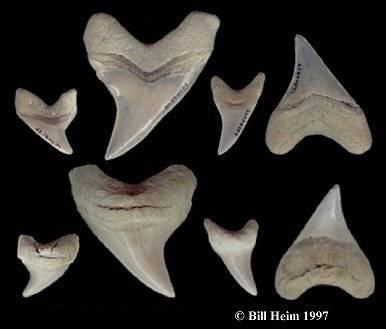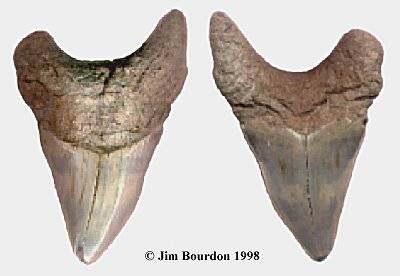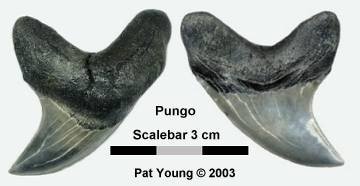|

Teeth from Parotodus benedeni are some the more desirable to be
found at the mine. Although having been a geographically dispersed species
with a long fossil record, they remain an uncommon find.
The teeth are characterized by their extremely deep roots, thick crown and overall
robust appearance. They are thought to have evolved from Otodus
(in the Eocene). This species seems to produce an inordinately high number of
pathologic teeth (see fig. 2).
The below image (Fig. 1) shows lingual and labial views of four Yorktown
specimens: a large lateral, a posterior, a lower anterior and a juvenile lateral.
The extreme thickness of these teeth can be seen in the large lateral. It is 74 mm
in length (slant height) and 22 mm thick.
Note the superficial resemblance of the juvenile to a mako tooth (although there
are no true mako teeth of this exact shape).
 |
Fig. 1 - Parotodus benedeni
Top: labial, Bottom: Lingual view
Largest tooth measures 74 mm in length (slant height) |
 |
| Fig. 2 - Parotodus benedeni pathological lower |
In addition to the Yorktown, Parotodus teeth may be found much less frequently in Pungo River sediments.
 |
| Fig. 3 - Parotodus benedeni Pungo River, NC |
>
|